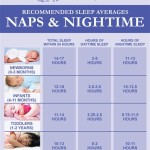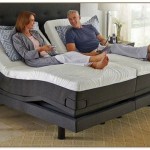Essential Aspects of Antique Bed Sizes
Understanding the essential aspects of antique bed sizes is crucial for collectors, enthusiasts, and those seeking to furnish their homes with authentic period pieces. Antique bed sizes have evolved over centuries, reflecting changes in sleeping habits, available space, and design preferences.
The part of speech of "Antique Bed Sizes" is a noun phrase. This indicates that the focus of the content should be on the specific characteristics and dimensions of antique beds, rather than their functionality or use.
Variations in Dimensions
Antique bed sizes varied significantly depending on the era and region. In the medieval period, beds were often small and narrow, with dimensions ranging from 48 to 60 inches in width and 72 to 84 inches in length. By the 18th century, beds had become larger, with widths of up to 72 inches and lengths of up to 96 inches. These larger beds were often referred to as "double beds" or "queen beds."
Impact of Architectural Styles
Architectural styles also influenced antique bed sizes. During the Renaissance and Baroque periods, beds became more elaborate and ornate, with intricate carvings and heavy drapery. These beds were often wider and taller than their medieval predecessors, with heights of up to 108 inches. In the 19th century, the Victorian era saw a return to more modest bed sizes, with widths ranging from 54 to 66 inches and lengths of up to 84 inches.
Materials and Craftsmanship
The materials used in the construction of antique beds also played a role in their size. Early beds were often made of wood, with simple joinery and plain finishes. In the 18th century, mahogany became the preferred material for beds, and the use of elaborate carvings and inlays increased. By the 19th century, iron and brass beds became popular, offering greater strength and durability.
Regional Differences
Regional differences also influenced antique bed sizes. In Europe, beds tended to be smaller than those in North America, where larger beds were more common due to the availability of space. In the Far East, beds were often even smaller, with dimensions of only 36 to 48 inches in width and 60 to 72 inches in length.
Modern Adaptations
While antique bed sizes remain popular among collectors and enthusiasts, they have also been adapted to modern living spaces. Contemporary bed sizes are typically larger than their antique counterparts, with widths of 60 to 76 inches for double beds and 76 to 80 inches for queen beds. King-size beds, which measure 76 to 80 inches in width and 80 to 96 inches in length, are also common.
Understanding the essential aspects of antique bed sizes is essential for those interested in collecting, restoring, or using antique beds in their homes. By considering the variations in dimensions, the impact of architectural styles, the materials and craftsmanship used, regional differences, and modern adaptations, individuals can make informed decisions when acquiring or incorporating antique beds into their living spaces.

An Antique Bed Mattress What You Need To Know The Honeycomb Home

Antique Iron Bed Sizes

An Antique Bed Mattress What You Need To Know The Honeycomb Home

Antique Bed Sizes

The Ultimate Guide To A Mattress For Your Antique Bed Custom Makers

An Antique Bed Mattress What You Need To Know The Honeycomb Home

A Guide To Antique Bed Sizes Understanding The History And Variations

An Antique Bed Mattress What You Need To Know The Honeycomb Home

Antique Bed Mattress Buyer S Guide 2024 Sizes Where To Buy

An Antique Bed Mattress What You Need To Know The Honeycomb Home
Related Posts







